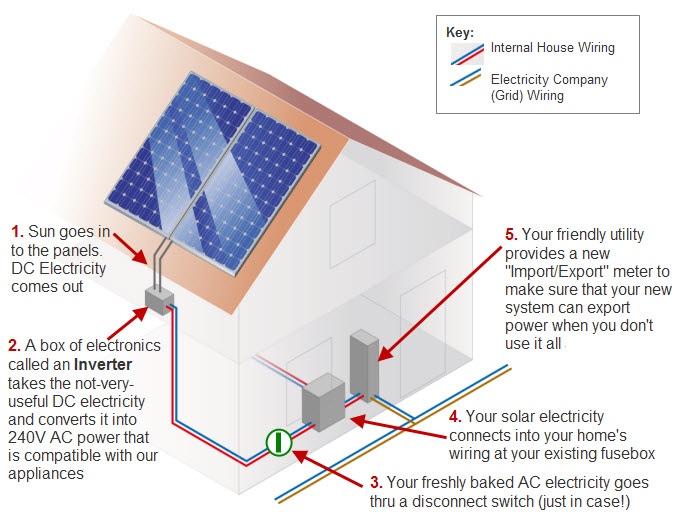The Future of Energy
These days, many homeowners are thinking about installing solar panels on their roofs, either for financial, civic, or environmental reasons. The good news is that the sun provides free, clean, safe, and renewable energy. According to Canadian homebuilder Mike Holmes, “Solar energy isn’t a trend, it’s the future. One of the best things we can do is use it.”
The Province of Ontario is encouraging residents to use solar and other renewable energy to reduce their power consumption from the electrical grid. Upgrades and new generation will be added across the system, but Ontario considers self-generated power from solar a key way to meet future energy needs.
How solar panels work
Particles of light called photons travel from the sun to the earth. Solar panels capture photons and convert them into electrons of direct current (DC) electricity. The sunnier it is, the more photons there are and the more electricity the panels can generate.
Although solar panels generate DC power, the appliances we use in our homes need alternating current (AC) power to work. That means DC power must be changed to AC power with an inverter.

System considerations and initial costs
A solar installation company can assess your roof orientation, how many panels you can fit, and the best location to capture sunlight. You can set up your system to feed into the electric grid or go “off-grid” by storing extra energy in large batteries.
The average cost of a home solar power system in Canada is between $15,000 and $30,000 for a 7,500 kW system. The price depends on several factors, and there may be rebates available for installation.
Saving money on energy bills
Power produced by the solar panels is used in your home. If there is extra energy, it’s exported to your electricity provider as part of their Net Metering program for a credit. You can use this credit against your future power use. However, a credit can only be carried forward up to 12 months.
A solar panel system can produce anywhere from 20% to 100% of your home’s annual power needs. If your energy production and credits provide all your electricity needs in a billing cycle, you only have to pay the standard fee to remain connected to the grid (typically $30 to $40). As electricity rates increase, your solar electricity effectively gets cheaper every year.
A solar panel system typically provides a 5-10% return on investment. Since solar systems last 30 years or more, it’s similar to taking out a long-term GIC.
Lifespan and maintenance
Most solar panels are guaranteed to produce 80% of their original output when they are 25 years old and should run well for up to 30 or 40 years. During that time, they won’t require a lot of maintenance. You can usually clean solar panels using the same equipment that you use to wash your windows. You shouldn’t have any problems with your solar panels if you keep them clean and don't allow dirt, etc., to settle on them for too long.
You can also install a monitoring system to keep track of declining performance, which will alert you that maintenance is required.

Pros & Cons

Pros
- save money on monthly energy bills
- low maintenance
- enhanced property value
- 100% green energy
Cons
- initial investment can be unaffordable
The House
Explore the different components of the house.

